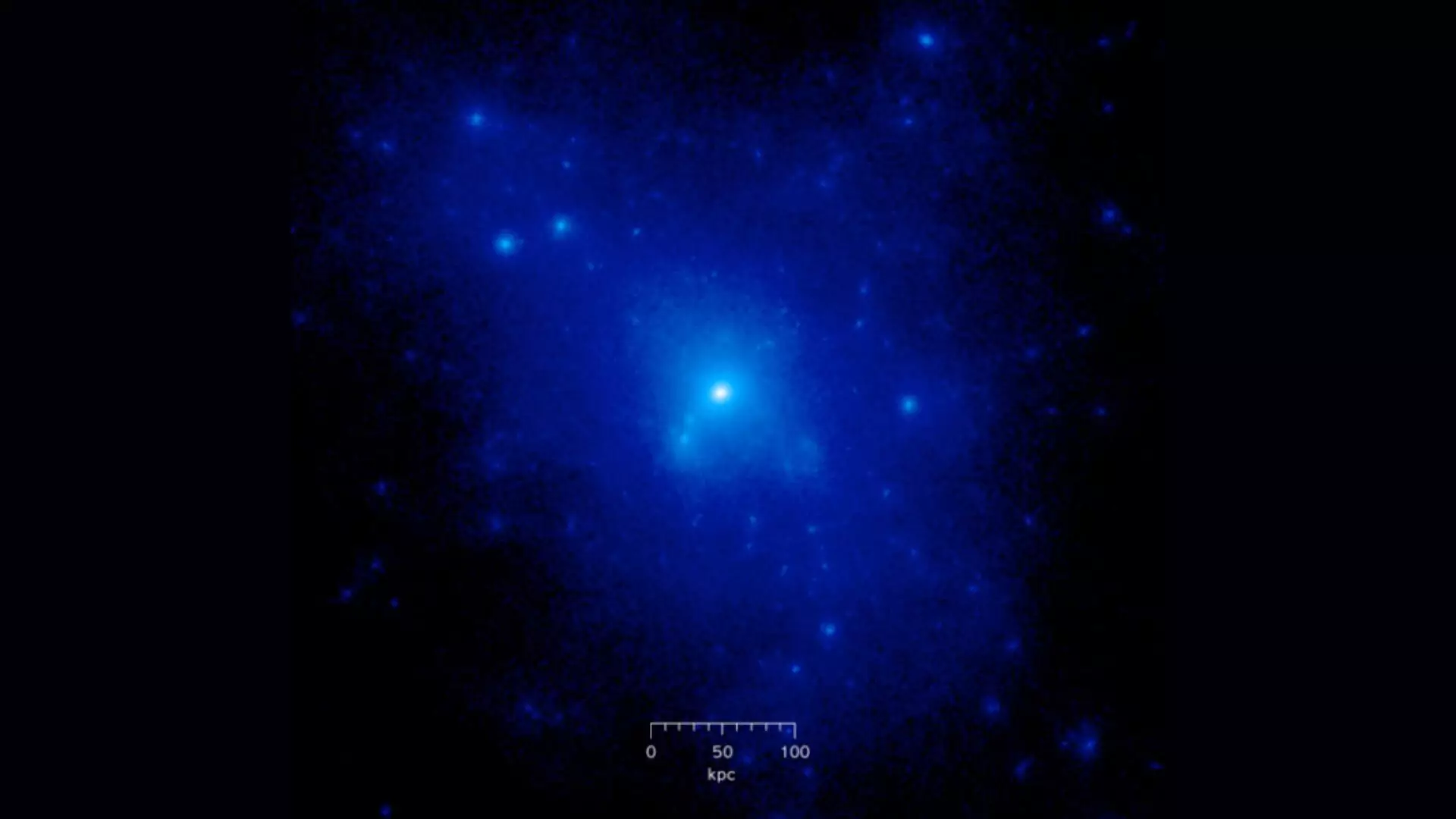Recent advancements in astrophysics have shed light on the intricate interplay between baryonic matter and dark matter in the cosmos. A groundbreaking study published in *Physical Review Letters* has unveiled the first evidence of cross-correlation between cosmic shear and the diffuse X-ray background. This pioneering research is significant as it helps clarify the distribution of baryonic matter, which constitutes a mere 5% of the universe, yet plays an essential role in the formation of stars, galaxies, and other cosmological structures.
Baryonic matter, which is primarily made up of protons and neutrons, exists in various forms within large-scale cosmic structures. It can be concentrated in stars and galaxies or found in diffuse states as hot gas. However, detecting baryonic matter in its diffuse state proves to be a challenge owing to numerous factors, including its interaction with dark matter and the gravitational influences present in the universe’s structure. The binding forces exerted by dark matter create halos, into which baryonic matter is drawn, complicating our understanding of their distribution.
Dr. Tassia Ferreira and her colleagues from the University of Oxford embarked on a quest to investigate the implications of baryonic physics on cosmological measurements. Their innovative approach involved merging data from two distinct observational sources to achieve a more comprehensive understanding of baryonic matter dynamics.
Utilizing data from the Dark Energy Survey (DES) Year 3 release, which comprises relevant measurements of galaxies and galaxy clusters, the researchers aimed to indirectly evaluate the distribution of dark matter by analyzing distortions in the shapes of distant galaxies. Cosmic shear, which refers to these distortions, serves as a tool to assess the gravitational effects of dark matter on observed structures. Although cosmic shear does not provide direct insight into baryonic matter, it offers invaluable information on how dark matter influences baryonic distributions.
On the flip side, the research team turned to the ROSAT All-Sky Survey (RASS), which delivered a comprehensive X-ray view of the universe. Herein lies the ingenuity of the study—the X-ray emissions from hot gas residing in dark matter halos act as a beacon guiding researchers toward the distribution of baryonic matter. Dr. Ferreira noted that the emissions are intimately connected to both gas temperature and density, hence providing essential data for mapping baryonic matter presence in dark matter halos.
The researchers’ approach to cross-correlation between cosmic shear and diffuse X-ray emissions is particularly noteworthy. Leveraging a hydrodynamic model built on earlier findings, the team calculated mass and gas distributions within dark matter halos, factoring in elements such as cold dark matter, ejected gas, and stars.
The research indicated that this cross-correlation framework allows for a more accurate tracer of baryonic matter distribution in the universe. It effectively mitigates problems related to wrong assumptions about individual structures by emphasizing collective emissions from large-scale phenomena. Notably, Dr. Ferreira emphasized the practicality of this model in reflecting how the hot gas behaves within cosmic structures, yielding fresh insights into the relationship between cosmic phenomena.
The investigation led to a significant revelation regarding the halfway mass of dark matter halos, estimated at an astounding 115 trillion solar masses. This metric highlights the critical process of gas expulsion from dark matter halos, deeply intertwined with cosmic evolution over time.
The discovery of a strong correlation between cosmic shear and the diffuse X-ray background—with a 23σ significance—suggests an undeniable relationship that could redefine how we assess cosmological theories. With new measurements that closely align with previous studies, the research provides a heightened level of precision concerning polytropic indices, which measure gas density and temperature relations in dark matter halos.
Moreover, these findings open the door to more sophisticated analyses in future cosmic surveys. Dr. Ferreira highlighted the method as a starting point for refining cross-correlation techniques among ongoing efforts in cosmological data collection, particularly with the impending Vera Rubin Observatory and the Euclid mission.
The study also paves the way for further exploration of the interplay between hydrodynamic and cosmological parameters, particularly through potential cross correlations with Sunyaev-Zel’dovich Compton-y maps. This could provide a multifaceted view of gas interactions within the broader cosmic landscape.
The novel findings regarding baryonic matter’s interaction with dark matter appear to be the tip of the iceberg in cosmic research. As scientists like Dr. Ferreira continue to probe the universe’s properties using innovative methodologies, our grasp of these intricate cosmic dances will undoubtedly evolve. This paradigm shift not only enhances our understanding of the universe’s structure but also enriches the ongoing quest to unravel the mysteries of dark matter and dark energy—elements that continue to define the cosmos as we know it.


Leave a Reply